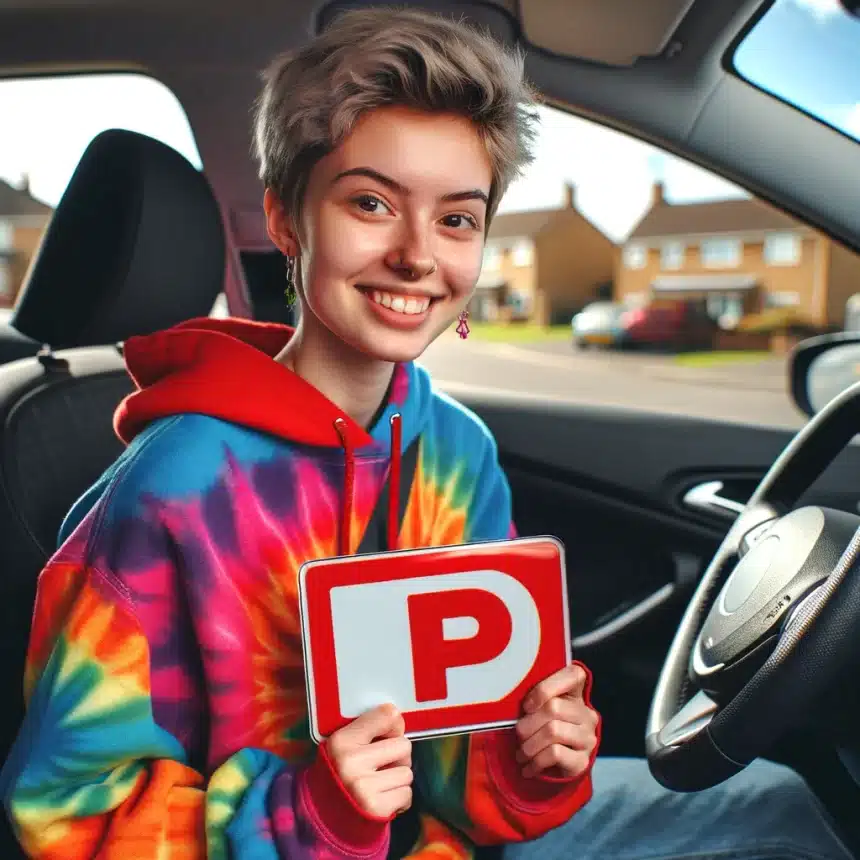Driving can pose unique challenges for individuals with autism spectrum disorder. Recently, I came across a story that highlighted the struggles faced by autistic drivers. Maneuvering the road while dealing with sensory sensitivities and social communication difficulties can be quite daunting.
It’s crucial to understand how to assist autistic individuals behind the wheel. Exploring various strategies and tools can greatly enhance their safety and independence on the road.
Understanding Autism Spectrum and Driving
Traveling with autism can bring unique challenges when it comes to driving. As someone on the spectrum, I’ve experienced firsthand the complexities of navigating the roads. Autism covers a wide range of traits, and each person may handle driving differently. Sensory sensitivities, like struggling with bright lights or loud sounds, can impact focus while behind the wheel. Additionally, difficulties with social communication and understanding non-verbal cues may affect interactions with other drivers.
For me, sticking to routines and established driving habits provides a sense of comfort and predictability on the road. However, unexpected changes in traffic or road work can be overwhelming and lead to increased anxiety. It’s crucial for individuals with autism to have coping strategies in place to manage stress while driving, such as deep breathing exercises or pulling over in a safe spot to regroup.
Recognizing how autism intersects with driving is vital for promoting road safety and creating a supportive driving environment for individuals on the spectrum.
Common Challenges Faced by Individuals
Navigating busy intersections and handling sudden lane changes can be quite challenging for individuals with autism while driving. These situations can feel overwhelming due to the need for quick decision-making and the unpredictability of other drivers’ actions. Personally, I find it tough to process multiple stimuli at once, like changing traffic lights, pedestrians crossing, and cars merging from different directions. The fast-paced nature of these environments can lead to sensory overload and increased anxiety, making it hard to stay focused and react promptly.
Moreover, interpreting non-verbal cues from other drivers adds another layer of complexity. Understanding gestures, eye contact, or subtle movements requires strong social cognition skills, which can be a struggle for individuals with autism. This difficulty can result in misunderstandings on the road and potential miscommunications that may escalate into dangerous situations.
Impact of Sensory Issues on Driving
When sensory issues come into play while driving, it can seriously affect my ability to stay focused and react quickly on the road. Bright lights, for instance, can be overwhelming, making it tough to see clearly and causing distractions. Loud noises like honking horns or sirens can startle me, increasing anxiety while behind the wheel. Also, rough steering wheels or uncomfortable seats due to certain textures can lead to discomfort, making it hard to concentrate on driving.
Moreover, these sensory issues can hinder my ability to process information efficiently. For example, if I’m sensitive to touch, the sensation of the steering wheel or pedals can be distracting and slow down my reactions. This can pose a significant risk, especially in high-pressure situations where quick decisions are crucial.
Strategies for Enhancing Driving Experience
To improve my driving experience, I find that having specific strategies and using adaptive technologies can make a big difference in how I navigate the road safely. One helpful approach for me is to establish a set routine before I start driving. This could involve doing relaxation exercises or organizing my thoughts, which helps me feel more prepared and focused on the road ahead. I also find that using noise-canceling headphones or sunglasses can help me deal with sensory overload while driving.
Another effective strategy is to gradually expose myself to different driving conditions through controlled environments, like heavy traffic or unfamiliar routes. This has boosted my confidence and reduced anxiety while driving. I’ve also found that using navigation apps with voice guidance and lane departure warnings is key to enhancing my driving experience. These technologies offer real-time support and help me navigate challenging situations more easily. By incorporating these strategies into my driving routine, I feel more confident and capable behind the wheel.
Legal Considerations and Driving Rights
Navigating the legal landscape and asserting my driving rights as an individual on the autism spectrum poses unique challenges that require a deep understanding and proactive advocacy. As someone with autism, I must navigate regulations that may not always consider the diverse needs and abilities of autistic drivers. One crucial aspect is revealing my diagnosis to the relevant authorities. While this can feel daunting, it’s vital for my safety and the safety of others on the road. Understanding the specific laws and requirements in my area is crucial to ensure compliance and avoid any legal issues.
Moreover, I must be ready to advocate for accommodations that could enhance my driving experience. This might involve requesting adjustments to the driving test or seeking reasonable modifications to existing traffic laws. Being proactive in expressing my needs and rights is key to guaranteeing that I can drive safely and confidently. By staying informed and assertive, I can work towards creating a more inclusive driving environment for individuals on the autism spectrum.
Technology Aids for Autistic Drivers
Navigating the legalities of driving with autism can be tough, but exploring tech tools for autistic drivers offers smart solutions to boost safety and independence on the road. These tools address specific challenges like sensory sensitivities, executive function issues, and difficulties in social communication that can impact driving skills.
One handy tech aid is GPS navigation systems with voice prompts. These systems help autistic drivers focus on driving by giving clear directions verbally, eliminating the need to read maps or signs. Backup cameras and parking sensors are also beneficial, making it easier to find parking spots and maneuver in tight spaces, reducing stress and the risk of accidents.
Smartphone apps are another great resource for autistic drivers. Apps that send reminders for maintenance checks, fuel levels, and driving routes help users stay organized and ready for their trips. Some apps even offer real-time traffic updates and suggest alternate routes, assisting with decision-making while on the road.
Driver Training Programs for Autism
Driver training programs custom-made for individuals with autism offer specialized guidance and support to improve their driving abilities and boost their confidence on the road. These programs are crafted to meet the unique requirements of autistic individuals, ensuring they receive the necessary assistance to become proficient and safe drivers.
- Organized Learning Environment: These programs provide a structured and predictable learning setting, which is advantageous for individuals with autism who thrive on routine and consistency.
- Visual Aids: Visual tools like diagrams, videos, and visual schedules are commonly utilized in these programs to help learners with autism grasp driving concepts and procedures more effectively.
- Personalized Instruction: Each participant receives personalized instruction tailored to their specific strengths and challenges, providing individualized support and guidance throughout the learning journey.
These personalized driver training programs play a vital role in empowering individuals with autism to develop essential driving skills and confidently navigate the roads.
Supporting Autistic Drivers in the Community
I’ve noticed how driver training programs tailored for individuals with autism can really improve their driving skills; now, let’s focus on supporting autistic drivers in the community.
As autistic individuals start driving on Liverpool roads, it’s crucial for the community to be understanding and make accommodations to ensure their safety and inclusion. One way to help autistic drivers is by raising awareness and educating the public about autism and how it can affect driving. This can create a more welcoming and supportive environment for autistic drivers on the roads.
Moreover, setting up designated parking spots for autistic drivers closer to entrances can help reduce sensory overload and anxiety, making it easier for them to access public places. Providing resources like sensory-friendly driving aids or navigation technology can also empower autistic drivers to navigate the roads with confidence.
Conclusion
Being autistic, I understand the struggles of driving. With the right support, understanding, and technology, we can make our driving experience safer and more enjoyable.
Every driver is different, and we all deserve the chance to drive confidently and independently. Let’s hit the road with determination and embrace the journey ahead!

As a full-time driving instructor and blogger, I’m thrilled to share my thoughts and advice. I’m an Accredited Driving Instructor. Always believed The IMPOSSIBLE is POSSIBLE and that everyone can learn good, safe driving abilities to enjoy their busy and joyful driving experiences. I can guarantee that all approaches and skills I teach will be with you for life: your licence and your safety.
